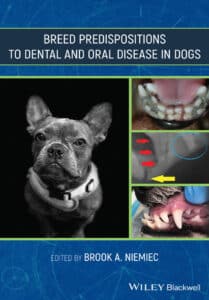
By Rowena Packer and Dan O’Neill
Health and Welfare of Brachycephalic (Flat-faced) Companion Animals, A Complete Guide for Veterinary and Animal Professionals. Health and welfare issues of brachycephalic (flat-faced) animals are one of the most pressing problems facing companion animals right now. Dogs, in particular, are suffering from a ‘brachycephalic crisis’ resulting from a perfect storm where predispositions to an array of health issues are amplified by a population boom for certain brachycephalic breeds such as the French Bulldog and Pug. But yet, for many owners, these dogs represent the perfect companion: endearing personas and cute looks in a socially desirable package. So where is the truth in all of this?
This book will equip veterinary professionals, animal welfare scientists, breeders and owners with the fuller story about brachycephalic health and welfare. The first half of the book provides the context of how and why we are in this crisis, offering in-depth historical, social, ethical, communication, nursing, welfare, epidemiological, genetics and international perspectives. The second half shifts towards the clinical arena, with chapters that cover the background, diagnosis, treatment and prevention of the many unique healthcare needs of brachycephalic animals. Cutting-edge knowledge is shared on a range of disciplines including respiratory disease, ophthalmology, dermatology, dentistry, neurology, obesity, reproduction and anesthesia.
With twenty chapters written by world-leading experts, lifetimes of experience and knowledge are condensed into the first book dedicated exclusively to brachycephaly in companion animals. This essential reference resource will inform, challenge and stimulate; it will open your mind to new opportunities for you to improve the welfare of brachycephalic animals by your personal and collective choices and actions. But prepare to be surprised: you may just find that your views on brachycephaly in companion animals will be changed forever.

This Book is Available for Premium Members













![Ettinger’s Textbook of Veterinary Internal Medicine 9th Edition [PDF+Videos] Ettinger’s Textbook of Veterinary Internal Medicine 9th Edition [True PDF+Videos]](https://www.vet-ebooks.com/wp-content/uploads/2024/10/ettingers-textbook-of-veterinary-internal-medicine-9th-edition-100x70.jpg)

![Textbook of Veterinary Diagnostic Radiology 8th Edition [PDF+Videos+Quizzes] Thrall’s Textbook of Veterinary Diagnostic Radiology, 8th edition PDF](https://www.vet-ebooks.com/wp-content/uploads/2019/09/textbook-of-veterinary-diagnostic-radiology-8th-edition-100x70.jpg)






